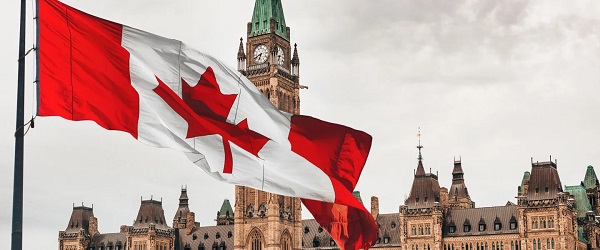Fraser Institute
Federal government’s ‘affordable housing’ strategy doomed without strong income growth

From the Fraser Institute
By Jake Fuss and Austin Thompson
Economist Mike Moffatt estimated that, if Canadian wages grow at the average rate seen over the past two decades—and if home prices remain stable—it would still take 20 years for Canada to achieve housing affordability levels of 2005… In other words, reality remains at odds with the Carney government’s ambitious rhetoric about delivering so-called “affordable homes.”
In a recent media scrum, the Carney government’s new federal housing minister Gregor Robertson—former mayor of Vancouver—was asked: “Should home prices go down?” His response: “No, I think that we need to deliver more supply, make sure the market is stable. We need to be delivering more affordable housing.”
Robertson’s response raises a follow-up question: what does the Carney government mean when it promises “affordable housing”?
Rising house prices are nothing new. The sticker price for the average Canadian home has increased in most years, barring periods such as the 2008–09 Global Financial Crisis. And house prices aren’t expected to fall anytime soon; forecasts point to continued house price growth. But for homebuyers, the key issue isn’t that prices are increasing; it’s whether they’re rising faster than incomes. By that measure, housing in Canada has become much less affordable in recent years.
Consider Minister Robertson’s tenure as Vancouver mayor from 2008 to 2018. During that time, the price of a typical single- or semi-detached Vancouver home grew from $690,000 to $1,980,000—a 187 per cent increase. Meanwhile, the after-tax income of a typical Vancouver family rose by just 15 per cent. Today, the typical single- or semi-detached home in Vancouver costs $2,380,000. Vancouver’s housing market is somewhat unique, but strong price increases reflect a broader national trend: home prices have risen dramatically even as income growth has stagnated, largely because housing demand—driven by immigration-fuelled population growth—continues to far exceed new housing construction.
Which takes us back to the question of “affordability.” Housing can become more “affordable” even as home prices rise, so long as the after-tax incomes of Canadians grow even faster. This has happened before—after-tax wage growth exceeded house price increases in the late 1980s, for example. Unfortunately, this seems unlikely to happen in the 2020s.
In fact, while house prices have soared, wage growth in Canada has stagnated. Consequently, in 2022 (the latest year of available comparable data), the typical worker in Alberta—Canada’s highest-wage province—earned less than the typical worker in low-wage U.S. states such as Mississippi and West Virginia. And from 2014 to 2024, Canada’s GDP per-person, an indicator of incomes and living standards, grew by a mere 2.0 per cent compared to 19.6 per cent in the United States.
In a recent analysis, economist Mike Moffatt estimated that, if Canadian wages grow at the average rate seen over the past two decades—and if home prices remain stable—it would still take 20 years for Canada to achieve housing affordability levels of 2005. And of course, much could go wrong—if wage-growth estimates fall short, mortgage rates rise or house prices rise, then that slow march towards housing affordability may never end for many Canadians including young people looking to start a family.
In other words, reality remains at odds with the Carney government’s ambitious rhetoric about delivering so-called “affordable homes.”
Again, the government wants to double the rate of homebuilding in Canada in a decade. Is that possible? Currently, Canada lacks the required savings and investment to fund that level of building. And due to tepid growth of our construction workforce, we currently do not have the manpower to build twice as many homes. And as always, local opposition to rapid housing development in certain neighbourhoods and public lands may also prove hard to overcome.
But even if somehow Canada was able to marshal the resources and political capital required for such a feat, according to Minister Robertson, the end result would only be to “make sure the market is stable.” Stable, based on today’s prices, means unaffordable for many Canadians unless incomes rise. Clearly, housing supply is only half the battle. To achieve housing affordability on any reasonable timeline, the government must not only help facilitate a major expansion in homebuilding but also substantial growth in Canadian incomes—something the Trudeau government failed to do.
The key is investment, which is required to expand the housing supply, grow Canada’s economy and boost wages. In a capital-scarce economy such as Canada’s, these goals may compete with one another. So governments in Canada, including the Carney government, must adopt policies that attract investment, such as streamlining regulation and reforming capital gains taxes. And crucially, rising incomes will only translate into improved affordability if Canadians can keep more of what they earn, which will difficult given that anticipated increases in federal spending will ultimately result in a higher tax burden. Ottawa must also craft immigration and residency policies so population growth doesn’t continue to overwhelm housing supply and further increase prices.
Canadians should think about housing affordability not just in terms of housing supply but as part of a broader economic challenge—one that also depends on growing the economy, increasing savings and investment, and limiting how much governments take in taxes. Only a comprehensive strategy, centered on broad-based growth, will make the dream of homeownership a reality for generations of Canadians.
Business
B.C. premier wants a private pipeline—here’s how you make that happen

From the Fraser Institute
By Julio Mejía and Elmira Aliakbari
At the federal level, the Carney government should scrap several Trudeau-era policies including Bill C-69 (which introduced vague criteria into energy project assessments including the effects on the “intersection of sex and gender with other identity factors”)
The Eby government has left the door (slightly) open to Alberta’s proposed pipeline to the British Columbia’s northern coast. Premier David Eby said he isn’t opposed to a new pipeline that would expand access to Asian markets—but he does not want government to pay for it. That’s a fair condition. But to attract private investment for pipelines and other projects, both the Eby government and the Carney government must reform the regulatory environment.
First, some background.
Trump’s tariffs against Canadian products underscore the risks of heavily relying on the United States as the primary destination for our oil and gas—Canada’s main exports. In 2024, nearly 96 per cent of oil exports and virtually all natural gas exports went to our southern neighbour. Clearly, Canada must diversify our energy export markets. Expanded pipelines to transport oil and gas, mostly produced in the Prairies, to coastal terminals would allow Canada’s energy sector to find new customers in Asia and Europe and become less reliant on the U.S. In fact, following the completion of the Trans Mountain Pipeline expansion between Alberta and B.C. in May 2024, exports to non-U.S. destinations increased by almost 60 per cent.
However, Canada’s uncompetitive regulatory environment continues to create uncertainty and deter investment in the energy sector. According to a 2023 survey of oil and gas investors, 68 per cent of respondents said uncertainty over environmental regulations deters investment in Canada compared to only 41 per cent of respondents for the U.S. And 59 per cent said the cost of regulatory compliance deters investment compared to 42 per cent in the U.S.
When looking at B.C. specifically, investor perceptions are even worse. Nearly 93 per cent of respondents for the province said uncertainty over environmental regulations deters investment while 92 per cent of respondents said uncertainty over protected lands deters investment. Among all Canadian jurisdictions included in the survey, investors said B.C. has the greatest barriers to investment.
How can policymakers help make B.C. more attractive to investment?
At the federal level, the Carney government should scrap several Trudeau-era policies including Bill C-69 (which introduced vague criteria into energy project assessments including the effects on the “intersection of sex and gender with other identity factors”), Bill C-48 (which effectively banned large oil tankers off B.C.’s northern coast, limiting access to Asian markets), and the proposed cap on greenhouse gas (GHG) emissions in the oil and gas sector (which will likely lead to a reduction in oil and gas production, decreasing the need for new infrastructure and, in turn, deterring investment in the energy sector).
At the provincial level, the Eby government should abandon its latest GHG reduction targets, which discourage investment in the energy sector. Indeed, in 2023 provincial regulators rejected a proposal from FortisBC, the province’s main natural gas provider, because it did not align with the Eby government’s emission-reduction targets.
Premier Eby is right—private investment should develop energy infrastructure. But to attract that investment, the province must have clear, predictable and competitive regulations, which balance environmental protection with the need for investment, jobs and widespread prosperity. To make B.C. and Canada a more appealing destination for investment, both federal and provincial governments must remove the regulatory barriers that keep capital away.
Business
Carney government should recognize that private sector drives Canada’s economy

From the Fraser Institute
An important lesson of the Justin Trudeau era is that economic prosperity cannot be built on the back of an expanding government sector, higher deficits and ever-greater political tinkering with the economy. It’s time for something different.
At the half-way point of what’s shaping up to be a turbulent 2025, how is Canada’s economy faring?
By any measure, the past six months have been a bumpy ride. The Canadian economy lost momentum over much of last year, with economic growth cooling, job creation slowing, and the unemployment rate creeping higher. Then as 2025 began came the shock of Donald Trump’s tariffs and—more recently—the outbreak of increased military conflict in the Middle East.
Amid these developments, indices of global policy and business uncertainty have risen sharply. This creates a difficult backdrop for Canadian businesses and for the re-elected Liberal government led by Prime Minister Carney.
Economic growth in the first quarter of 2025 received a temporary boost from surging cross-border trade as companies in both Canada and the United States sought to “front-run” the risk of tariffs by increasing purchases of manufactured and semi-finished goods and building up inventories. But trade flows are now diminishing as higher U.S. and Canadian tariffs come into effect in some sectors and are threatened in others. Meanwhile, consumer confidence has plunged, household spending has softened, housing markets across most of Canada are in a funk, and companies are pausing investments until there’s greater clarity on the future of the Canada-U.S. trade relationship.
Some forecasters believe a recession will unfold over the second and third quarters of 2025, as the Canadian economy absorbs a mix of internal and external blows, before rebounding modestly in 2026. For this year, average economic growth (after inflation) is unlikely to exceed 1 per cent, down from 1.6 per cent in 2024. The unemployment rate is expected to tick higher over the next 12-18 months. Housing starts are on track to drop, notwithstanding a rhetorical political commitment to boost housing supply in Ottawa and several provincial capitals. And business investment is poised to decline further or—at best—remain flat, continuing the pattern seen throughout the Trudeau era. Even this underwhelming forecast is premised on the assumption that ongoing trade tensions with the U.S. don’t spiral out of control.
How should Canadian policymakers respond to this unsettled economic picture? We do not face a hit to the economy remotely equivalent to that generated by the COVID pandemic in 2020-21, so there’s no argument for additional deficit-financed spending by governments—particularly when public debt already has been on a tear.
For the Carney government, the top priority must be to lessen uncertainty around Canada-U.S. trade and mitigate the threat of sweeping tariffs as quickly as possible. Until this is accomplished, the economic outlook will remain dire.
A second priority is to improve the “hosting conditions” for business growth in Canada after almost a decade of stagnant living standards and chronically weak private-sector investment. This will require significant reforms to current taxation, regulatory and project assessment policies aimed at making Canada a more attractive location for companies, investors and entrepreneurs.
An important lesson of the Justin Trudeau era is that economic prosperity cannot be built on the back of an expanding government sector, higher deficits and ever-greater political tinkering with the economy. It’s time for something different.
Policymakers must recognize that Canada is a largely market-based economy where the private sector rather than government is responsible for the bulk of production, employment, investment, innovation and exports. This insight should inform the design and delivery of economic policymaking going forward.
-

 Business2 days ago
Business2 days agoCarney government should recognize that private sector drives Canada’s economy
-

 Alberta2 days ago
Alberta2 days agoAlberta school boards required to meet new standards for school library materials with regard to sexual content
-

 Environment1 day ago
Environment1 day agoEPA releases report on chemtrails, climate manipulation
-

 Bruce Dowbiggin2 days ago
Bruce Dowbiggin2 days agoThe Covid 19 Disaster: When Do We Get The Apologies?
-

 Alberta2 days ago
Alberta2 days agoFourteen regional advisory councils will shape health care planning and delivery in Alberta
-

 Business2 days ago
Business2 days agoCannabis Legalization Is Starting to Look Like a Really Dumb Idea
-

 Media2 days ago
Media2 days agoCBC journalist quits, accuses outlet of anti-Conservative bias and censorship
-

 Crime1 day ago
Crime1 day agoSweeping Boston Indictment Points to Vast Chinese Narco-Smuggling and Illegal Alien Labor Plot via Mexican Border










